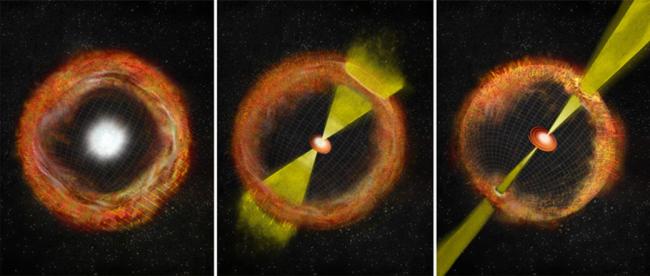Featured
- Get link
- X
- Other Apps
Stellar Astronomy
Stellar Astronomy: Exploring the Wonders of Stars
Introduction:
Stellar astronomy is a captivating field of study that focuses on the observation, classification, and understanding of stars. Stars are celestial objects that emit light and heat through nuclear fusion processes occurring in their cores. They are the building blocks of galaxies, responsible for illuminating the universe and shaping its structure and evolution. In this article, we will delve into the fascinating world of stellar astronomy, exploring its key concepts, advancements, and contributions to our understanding of the cosmos.
Stellar Classification and Properties:
One of the fundamental aspects of stellar astronomy is the classification and characterization of stars. Stars are classified based on their temperature, luminosity, size, and spectral characteristics. The most commonly used classification system is the Morgan–Keenan (MK) spectral classification, which categorizes stars from the hottest and brightest (O-type) to the coolest and dimmest (M-type).
By analyzing the properties of stars, astronomers can determine their masses, radii, chemical compositions, and ages. Stellar spectra provide valuable insights into the elements present in stars, allowing scientists to study their elemental abundances and evolutionary processes. This information helps us understand the different stages of stellar evolution, from protostars to main sequence stars, red giants, and eventually white dwarfs, neutron stars, or even black holes.
Stellar Evolution and Life Cycles:
Stellar astronomy unravels the life cycles and evolution of stars, providing insights into their birth, existence, and eventual fate. Stars are born from vast clouds of gas and dust called nebulae. Gravitational forces cause these nebulae to contract, leading to the formation of protostars. As the protostar gathers more mass, its core becomes dense and hot enough for nuclear fusion to occur, igniting the star.
Main sequence stars, like our Sun, spend the majority of their lives in a stable phase, where nuclear fusion reactions in their cores balance the inward gravitational forces. Eventually, as the hydrogen fuel depletes, stars undergo changes, expanding into red giants or supergiants. In this phase, heavier elements are produced through fusion processes. The final stages of stellar evolution depend on the mass of the star. Low to medium mass stars, like our Sun, shed their outer layers, forming planetary nebulae and leaving behind a dense core known as a white dwarf. Massive stars, on the other hand, end their lives in spectacular supernova explosions, leaving behind neutron stars or black holes.
Binary and Multiple Star Systems:
Stellar astronomy also explores the dynamics and characteristics of binary and multiple star systems. Binary systems consist of two stars orbiting around a common center of mass. These systems provide unique opportunities to study stellar interactions, mass transfer, and even the formation of exotic objects like X-ray binaries or gamma-ray bursts.
Multiple star systems, with three or more stars, can exhibit complex gravitational interactions, leading to intricate orbits and even stellar collisions. Studying these systems helps astronomers understand the stability and formation of star clusters and the dynamics of galactic structures.
Stellar Populations and Galactic Structure:
The study of stellar populations and their distribution within galaxies plays a crucial role in understanding galactic structure and evolution. Stellar astronomy examines the different types of stars found in galaxies, such as Population I and Population II stars.
Population I stars are typically young, metal-rich stars found in the spiral arms of galaxies, like our Milky Way. These stars often exhibit high rates of star formation and are enriched with heavy elements. Population II stars, on the other hand, are older, metal-poor stars found in the galactic halo or globular clusters. Their formation predates the enrichment of heavy elements in the galaxy.
Stellar astronomy investigates the distribution and movement of stars within galaxies, providing insights into the dynamics
of galactic structures, the formation of spiral arms, and the role of stellar feedback in shaping the interstellar medium.
Stellar Spectroscopy and Astrophysics:
Spectroscopy is a powerful tool in stellar astronomy, allowing astronomers to study the composition, temperature, and velocity of stars. Spectral lines provide information about the elements present in stars, while Doppler shifts reveal their motion towards or away from Earth.
Astrophysics, a branch closely related to stellar astronomy, employs physical principles and mathematical models to understand the underlying processes governing the behavior of stars. It encompasses stellar structure and evolution, stellar atmospheres, nucleosynthesis, and stellar dynamics. By combining observational data, theoretical models, and computational simulations, astrophysicists deepen our understanding of the physical properties and phenomena occurring within stars.
Conclusion:
Stellar astronomy provides a captivating exploration of the celestial objects that light up the universe. By studying the classification, evolution, and properties of stars, astronomers gain insights into the dynamics of galaxies, the formation of elements, and the fundamental processes that shape our cosmos. As advancements in observational techniques, space missions, and computational models continue, stellar astronomy will continue to uncover new discoveries, refine our understanding of stellar evolution, and inspire awe and curiosity about the wonders of the universe.
- Get link
- X
- Other Apps

Comments
Post a Comment